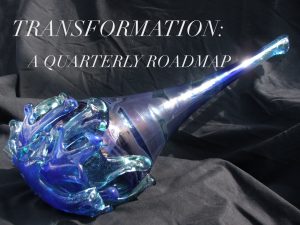
“A high performing human work place calls for equal attention to Glastonbury and Avalon” ~ Charles E. Smith, PhD.
In King Arthur’s legend, Glastonbury symbolized a visible city and Avalon an invisible city. Each, however, occupied the same physical territory. Only a few individuals like Merlin, the King’s Counsel, knew how to find their way between the two. In fact, most people no longer even knew of Avalon’s existence; let alone how to get there.
By analogy, each of today’s corporations, government agencies, and communities includes these same two dimensions. In a corporation’s visible Glastonbury are found familiar objects and events such as buildings, machines, materials, products, services, vendors, customers, and stock prices. Also there, unfortunately, often reside a host of problems.
In the same companies’ invisible Avalon are relational qualities such as mutual trust, honesty, compassionate listening, forgiveness and reconciliation, caring relationships, cooperation toward grand visions, confidence in the future, alignment among personnel, and commitment to others’ success. Avalon too, harbors difficulties. Both dimensions have their own cultures and structures, forms of energy, and outputs.
Both Glastonbury and Avalon are essential to the vibrant health, genuine success, and continuous improvement of any organization. Glastonbury deals primarily with objective reality — things tangible and countable. Avalon is most concerned with relational realities — neither physical nor easily measurable. Without Glastonbury a corporation cannot offer products and services to its customers. Without Avalon it lacks heart and soul.
Both individuals and organizations move naturally toward higher levels of complexity as they age. At any point in time, too much order, certainty, and predetermined process can suppress energy. So can too much flexibility, looseness, and motion. People need as much energy as possible to achieve their highest purposes. Typically, however, both people and organizations respond to increased complexity by reflexively increasing order and process. When problems are about relationships, they would be better off tending to Avalon. But Avalon approaches such as becoming more flexible, adaptive, and open are not effective when Glastonbury qualities of order and measuring are called for.
Raising consciousness of both Avalon and Glastonbury may be confusing since people tend to spend their lives seeing the world from one place or the other. As the new category of thought gets clearer, people experience changes and they become more able to operate from a place that recognizes both realities at once.

People tend to think in either/or terms, especially under pressure. In the ‘business as usual’ universe, people rarely speak the truth from their hearts. They stick to the language of business. While many people are quite willing to talk about Avalon, this is deceptive because they are not willing to go there experientially. They often need to be led into this unfamiliar territory, and may need to change their usual rules of engagement. In organizations, only a few take on that kind of dual leadership, as most corporate measurement and reward systems place the greatest value on Glastonbury.
Merlin’s power comes from the ability to see both sides fully — to hold opposites in the mind with equal attention. This takes commitment and practice, and is as much about physical realities as about relationships.
Download Article 1K Club



















